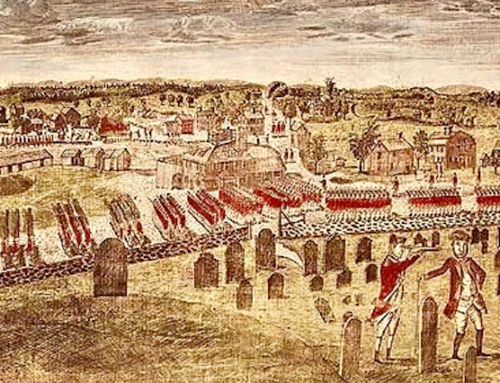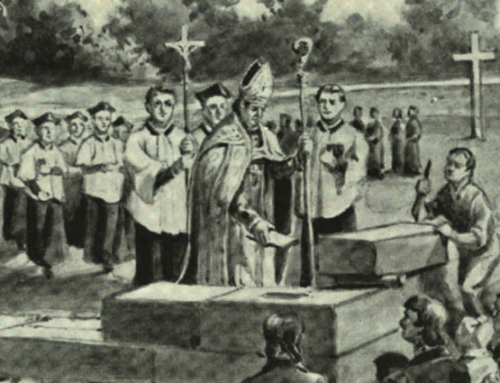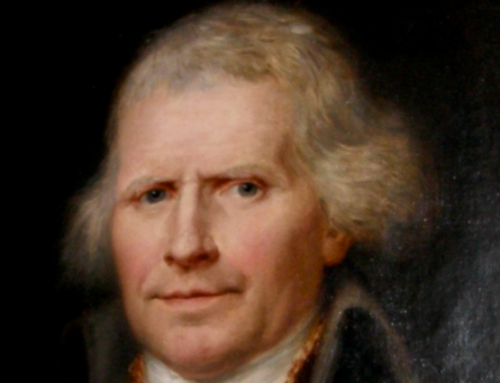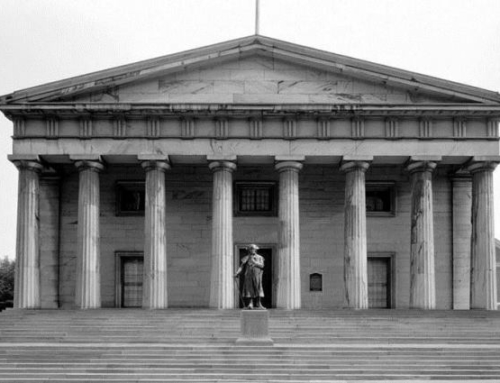I am increasingly persuaded that the great divide in this country between right and left comes down to a divide between those on the right who think that the United States has essentially been a force for good in the world and those on the left who think this country has essentially been a force for ill.
 What follows will essentially be a report from the trenches. But first let me supply an over-arching framework. Here goes. There is much debate these days over the teaching of what’s called “critical race theory.” But that isn’t the whole story. There is also a parallel debate among opponents of this “theory” as to whether the term itself should be thrust front and center or whether the idea behind the term should be emphasized.
What follows will essentially be a report from the trenches. But first let me supply an over-arching framework. Here goes. There is much debate these days over the teaching of what’s called “critical race theory.” But that isn’t the whole story. There is also a parallel debate among opponents of this “theory” as to whether the term itself should be thrust front and center or whether the idea behind the term should be emphasized.
Count me as an opponent of the theory, as well as an opponent of making the term central to the debate against it. The issue is less the theory than the central idea behind it. Call it what you will, the central idea amounts to a condemnation of the United States as a force for ill in this world. That would be a force for ill both historically and currently—and a continuing force for ill unless revolutionary changes are made.
Put simply, I am increasingly persuaded that the great divide in this country between right and left comes down to a divide between those on the right who think that the United States has essentially been a force for good in the world and those on the left who think this country has essentially been a force for ill.
Given that background, here is a snapshot of some local efforts of those who subscribe to the latter idea, which really amounts to the central idea that animates what goes by the name of “critical race theory.” It appears that higher education in Minnesota is slated to be jolted by its own internal “awokening.” For now better than two decades what’s called the Minnesota Transfer Curriculum (MTC) has been quietly doing what it was supposed to do. Designed to assure greater uniformity of instruction, it has streamlined student movement and progress within our state college and university system. Now it is about to be asked to do something more than that.
What follows might be titled “critical race theory by stealth.” Nowhere is the term itself on display. But the intent is obvious.
The initial idea behind MTC was quite straightforward. In the name of assuring uniformity from institution to institution all courses designated for inclusion in it had to pursue agreed upon goals. To be sure, not every goal could possibly apply to every course, but every course had to align with appropriate goals, as well as with a majority of the sub-goals.
Currently there are six “core goals” (communication, critical thinking, natural sciences, mathematical/logical reasoning, history and the behavioral and social sciences, humanities and fine arts), plus four “theme goals” (human diversity, global perspective, ethical and civic responsibility, and people and the environment). Pretty standard, pretty routine stuff.
Teachers are in turn tasked with producing a syllabus that spells out just how a majority of these sub-goals will be pursued and achieved.
Current Goal Seven, simply titled “Human Diversity,” would readily apply to any history or geography course designated for this curriculum. It might also be appropriate for a literature or a political science course. Here it is: “To increase students’ understanding of individual and group differences (e.g., race, gender, class) and their knowledge of the traditions and values of various groups in the United States. Students should be able to evaluate the United States’ historical and contemporary responses to group differences.”
While the first sentence seems innocuous enough, save for the obligatory “race, gender, class” mantra, the second sentence is clearly more problematic. Just whose response is to be evaluated? And what happened to the “individual?” Are individual differences ultimately to be ignored?
Such questions are about to be moot, since this Goal Seven is slated to be scrapped and replaced with an entirely new Goal Seven that is directed at “Acknowledging and Eliminating Structural Racism in the United States.”
Fleshed out, this goal requires teachers to “build knowledge and understanding of historical and contemporary phenomena related to the ongoing legacy of structural racism and other forms of intersectional oppression in the United States.” This is much less standard academic stuff. But it gets worse.
With “wokeness” as the goal, students will then be able to “identify how they interact with these topics and identify opportunities that yield equitable outcomes.” The first of five sub-goals adds to the specificity of it all: “Explain structural racism as a primary source of historical and ongoing oppression of people of color and how the dominant group changes the definition of race to maintain power in the United States.”
This “dominant group” is never defined. Is it all white people or only some white people? Is it white men or only some white men? And how has anyone changed the definition of race to hold on to power?
An easy case can be made that all the other goals, including the existing “human diversity” goal, have something to do with helping to assure (if not necessarily “build”) an educated citizenry committed to the pursuit of truth, goodness and beauty. Finally, each of the other goals presumes that teachers and students are living and learning in a decent country of fair-minded fellow citizens.
Compare all of that with the proposed new Goal Seven. Here the pursuit of truth gives way to the assertion of a highly politicized truth, a truth which presumes that knowledge is somehow being “built,” which is itself a curious, if revealing, choice of words. But the larger point here is that it knowledge aimed at the confirmation of an already asserted “truth,” a truth which presumes that the color of one’s skin determines one’s status as a victim or oppressor.
It is also knowledge directed at the larger, if unstated, goal of transforming the student into some sort of an anti-racist activist, although such an activist might be more honestly defined as an anti-racist racist. To be sure, there is no bullet point goal which states that students will then be better equipped to take to the streets to tear down a country founded on—and that continues to perpetuate—white racism and oppression. But students who have been built and fortified by this new goal might well be excused, if not coddled and praised, for deciding that this is their charge. At the very least, such well-built students are not likely to be inclined to defend such a country. Whether rhetorically or otherwise. .
If this goal does pass final muster, teachers will be faced with one unmistakable certainty and one very large doubt. If their charge is clear, the consequences of failing to implement it are not. Operating under such a goal, must a teacher agree and assert that an “ongoing legacy of structural racism” does exist, thereby assuring that something called “intersectional oppression” is alive and well in Minnesota? Will this be policed? And if so, how?
Teachers—and administrators—who dissent from this ideological orthodoxy will then be faced with these alternatives: cave or resign—or resort to some sort of wink-wink, nod-nod undermining of this new regimen.
Multiple forms of corruption will take place no matter what. Teachers will be required to align themselves with those who have decided that this country has been a force for ill in the world since its inception. Call it critical race theory or call it something else, it is a demand for ideological conformity of a very dangerous sort.
And then what? This ideological conformity will then either be enforced or subverted—or both. And if it is successfully enforced, what then? An irony will have been enthroned. The Minnesota Transfer Curriculum goal of “Human Diversity” will have been replaced by a very different goal. That would be a goal that not only dictates ideological conformity of a leftist sort, but a goal that denies intellectual diversity of any sort, thereby doing away with the only kind of diversity which should matter in a college classroom.
The Imaginative Conservative applies the principle of appreciation to the discussion of culture and politics—we approach dialogue with magnanimity rather than with mere civility. Will you help us remain a refreshing oasis in the increasingly contentious arena of modern discourse? Please consider donating now.
The featured image is a photograph of Crystal Shell from Pennsylvania and many people on Monday, Jan. 21, who stopped in front of the Emancipation Memorial on their way to the inauguration ceremonies. The Emancipation Memorial is a monument in Lincoln Park in the Capitol Hill neighborhood of Washington. This file is in the public domain, courtesy of Wikimedia Commons.







Thank you for this enlightening expose of CRT!
When one despises the country, one must despise the founding concepts of freedom and liberty. Then one demands suppression of these, not for good cause but because it signals one’s virtue bone fides.
I would propose that the “lead” into your essay (I am increasingly persuaded that the great divide in this country…”) is misleading us into the wrong conclusions about how to confront and mend the divide.
My concern is that the “lead” as put forth is focused upon “the what” without accounting for the motivation as to why one takes the side of “good vs. ill”.
The underlying motivation is more a view as to whether human nature is flawed and that we must change ourselves so that we can have a positive impact on the world. That is opposed by the counter-view that human nature is flawed and only through my perfection must others come to adopt my perfection or suffer the consequences of my purification. One points toward free-will and redemptive powers, whether through God, karma or forgiveness. The other points toward dictatorial enforcement or ostracizing action, where forgiveness and goodness are bestowed only upon the elite or the subservient.
It is this internal view of oneself in relationship to God (or the universe in the thinking of well-meaning pagans and atheists) that causes us to choose which side – “good vs. ill”.
That’s one way to look at it, and I don’t dispute anything you list, but I think a better way to look at the divide is this:
I believe the great divide in this country between right and left comes down to a divide between those on the right who think that traditional values are reasonable, have merit, and lead to the common good while those on the left find them unreasonable, do not have merit, and are contrary to the common good.
The US Midwest is derisively referred to as “flyover country” by coastal elites. it appears that Minnesota wants to join the elites. Their Representative Omar can no doubt lead them in that direction.
Interesting in that the author’s response tends to be as purely ideological.as the issue being critiqued. While there is much worthy of consideration in the critique, it is, like most ideological arguments, over simplified.
While CRT is very open to thoughtful critique it has points worthy of thoughtful consideration too. U.S. History is full of horrendous and, yes, evil treatment to fellow human beings based on race. But U.S. History is also full of good and great advances in its ethnically diverse population.
I agree with CT’s comments and would argue that attention to the realities of our universally flawed human nature, and it’s negative consequences. But more attention needs to be paid to the role of free will and how to choose “the better angels of our shared human nature”.
A little less finger pointing and a lot more critical self reflection would be far more effective at healing these useless divides.
You could not be more mistaken: “While CRT is very open to thoughtful critique it has points worthy of thoughtful consideration too.”
If by CRT you mean those who advocate its tenets, then you know very little about them. These advocates start out by denying there is any such thing as CRT; then they would like you to believe it is only about accurate history; then when that fails, they conclude you are irredeemably racist. The critique they refuse to consider is the one assumption from which all else is derived, i.e. Marx’s assertion that all of human history is characterized as master and slave. It is a false and absolutely self limiting first principle. And not one of the many variants derived from this first principle are worthy in any intellectual sense.
Michael Bond,
I think you may be misreading my quoted remark. I am no supporter of CRT’s most “convinced” advocates, or of the false and destructive philosophy underpinning CRT. I understand your comments as well.
But this too: My general critique of the author (and of CRT) is that both are merely ideological arguments. May I challenge you with that same critique?
It seems to me that if the argument never rises above the finger pointing and the hubris of ideology, the only possible result is further division.
Politics will not heal the wounds or save the world. I’m just suggesting that there are better ways to confront the lies of Marxist based theory. I would really like to see those arguments brought to bear, rather than simply more of the same ideological bravado.
Your approach implies that since both CRT and the author are making ideological arguments, that they have a moral equivalency. Pol Pot was an ideologue. To extrapolate your argument further, had we just engaged with him in dialogue, we would have achieved a different outcome.
To engage in serious dialogue, both parties must be open to truth and be willing. To accept that they have built their premise upon a firm foundation. If you, or the CRT advocates can demonstrate the flaws in what Mr. Chalberg has presented, I know him to be open to changing his opinion. Until then, I don’t believe we’ll make any progress in finding common ground when one side is held to a requirement of truth and good faith, while the other side simply has to rise to the level of “having a right to their own opinion”.
I would appreciate some direct links where “CRT is very open to thoughtful critique it has points worthy of thoughtful consideration too.” Certainly there are debates within the community, but I have not seen those who espouse it accept criticism of the fundamental assumptions upon which it is based. With all due respect, debate inside an echo chamber doesn’t serve the greater of society very well.
Professor Chalberg:
I have appreciated and admired your analyses and reflections for some time. You are the Forlorn Hope of the academy.
It would have been an honor to be your student, your colleague, your friend.
Thus, for your own sake, get out of there. Now.
By “there” I mean your disgraced profession as well as the state of Minnesota. Save yourself. Do not go down with the ship. What was once “higher education” is not a ship. It’s a pig sty.
Leave the swine to wallow in it. It’s theirs, and they deserve it.
I could put you up in my remote encampment in the frigid northern Rockies of Montana. You’ll always have a place at my campfire.
You and I could freeze to death or be eaten by a grizzly bear (or both) while reading Solzhenitsyn and Melville, and we’d be a lot wiser, more honest and honorable, and better off than an academic.
Higher education is a total loss and a positive evil. Let the maggots consume it.
I value you, Professor Chalberg, not Minnesotans and definitely not the gorgons and geldings of the university in the West.
If Mr. Chalberg chooses to remain and fight the dragon rather than wait to fight another day, then I applaud him for his courage. The problem with your suggestion is that if we all do that, eventually the will be nowhere left to run.
Mr. Chalberg’s essay is truthful, direct and respectful. We need more of that in our rapidly devolving societal discord.
“Higher education is a total loss and a positive evil. Let the maggots consume it.” Well said and “Amen” Mr Hyatt.
Fortunately, I am not required to submit a Syllabus or related for review by the colleges where I teach. It is academic freedom and very important to me.
The author seems unaware that CRT was critical of the Marxist view of racism as too economically reductive. It’s also clear that, like all great empires, the USA has been a force for both good and ill over the course of its long history. Bifurcated thinking is woefully inadequate to history, philosophy, and politics.
Yet “bifurcated thinking” must be selectively employed quite when necessary. Else historians would be locked in arguments as to whether Abraham Lincoln was following alien instructions in his conduct during the Civil War.
This notion that all opinions hold stature because someone holds them needs to die with the drug induced, free love 60’s movement from which it was spawned!
I appreciate all of the thoughtful responses. I would not disagree that there have been times and occasions when the U.S. has been, shall we say, less than a force for good and even a force for ill here and there. I should have added an “on balance” or a “generally speaking.” That stipulated. I do think that the distinction very much applies to today’s debate between left and right. Here I would add that those on the right, myself included, tend to be very aware of our sins, past and present, while those on the left tend to be all too aware of them–and all too convinced that we must start anew. One more point. if I may. I would agree that something like the Mexican war of the 1840s was a land grab at best, and certainly an instance of the U.S. as a force for ill–at least in a limited sense. But it surely helped make the U.S. into a great power and a great force for good in the 20th century–and in much more than a limited sense.
To your original point, there appears to be an odd disjuncture with those who say that they want American history education to be about the generally positive effect of American government and the good things the American government has done — and yet those very same people are the most skeptical of federal government, federal power, etc. “the worst thing is to hear ‘the govt is on its way’”
Wouldn’t the “patriotic” education plan inevitably create adults who believe in the inherent goodness and positive value of American government to make the world a better place? And isn’t that the very mindset you want them to be skeptical of?
The right seems to want it both ways — the past govt was glorious, the current govt is dangerous. Adore Washington but be suspicious of Washington elites. Celebrate founding fathers to create a unified national identity, beware of propaganda. The past should not be criticized, but the present should be criticized endlessly.
The past is basically good for conservatives but to say that our current government is basically good is anathema. What gives?
I consider myself a conservative, but I agree with this and I wish Chalberg or someone would respond to it. (I don’t wish it because I’m thinking of converting to liberalism and want someone to talk me out of it or anything like that. I just think it would be more interesting than debates between liberals and conservatives generally are.)
The one thing you should know before reflecting on your beliefs is that the left-right divide is not discrete or definible. There are individuals who call themselves liberals or “former liberals” who have always been closer to others who self-identity as conservative, and vice-versa. If you are brave enough to follow all your beliefs to their logical conclusions without making any special exceptions, then you will find what you really believe.
Hi. I’m not sure if you’re addressing Ryan or myself. Actually, I’m not quite sure what you’re saying at all. Would you care to clarify? (If you’re saying you think I should become a liberal, I really don’t think so. I disagree with them about so many issues.)